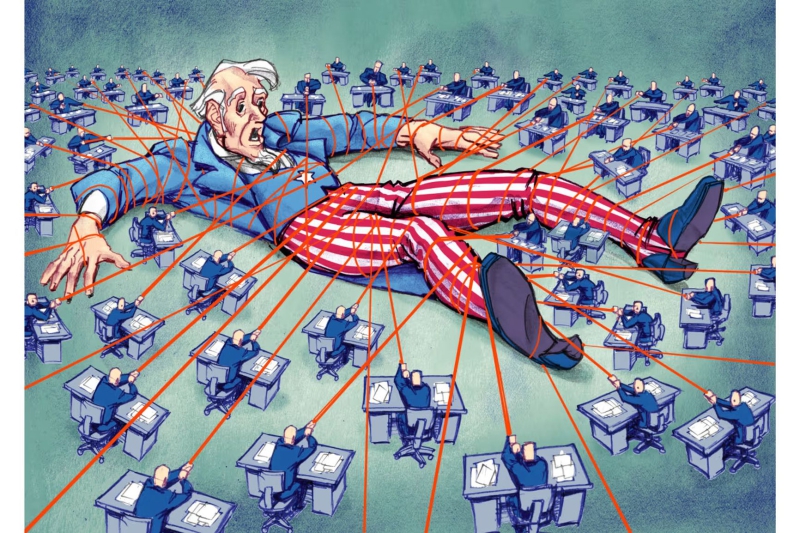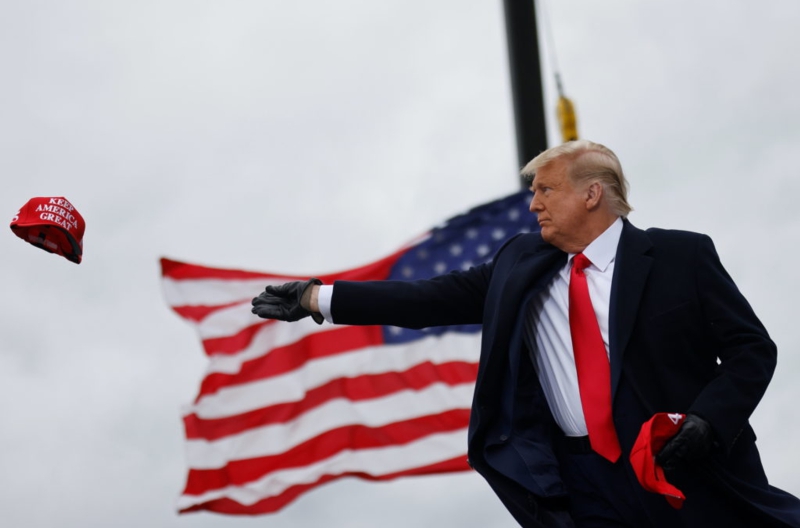In Dec. 2023, when FoxNews personality Sean Hannity asked Trump if he was “promising America tonight you would never abuse power as retribution against anybody?” he replied: “Except for Day One.” The implications of this response will soon become clear. Starting from Jan. 20, 2025, Republicans will control not only the White House, but also both chambers of Congress. The Supreme Court, with a 6-3 conservative majority that includes three Trump appointees, will effectively be under the president’s influence. The Republican Party today is also far more loyal to Trump than it was in 2016 when he first won its nomination for president. This level of power concentrated in a single leader has been rare in U.S. history. However, as political analyst Ivan Preobrazhensky points out, American society has strong defenses against any attempts to consolidate power in the country The federal system, independent media, civil society, and a professional bureaucracy all remain robust safeguards, ensuring the United States does not become a country resembling Russia.
Checks and balances
Compromise is a cornerstone of American democracy. The country’s political system developed in this way partly by the design of the Founding Fathers and partly as a result of natural evolution. The goal was to prevent any monopoly on power. The most basic form of this division is within Congress itself, where the president often belongs to one party while the majority in the House of Representatives or Senate — or even in both — is held by the opposition.
Compromise is a cornerstone of American democracy
A recent example is Joe Biden’s presidency, in which he frequently had to negotiate with a Republican-controlled House. The resulting standoffs complicated key strategic decisions, such as the approval of new financial and military aid packages for Ukraine and Israel. However, they also compelled Democrats and Republicans alike to seek compromise, negotiate, and arrive at more balanced decisions, particularly in areas of domestic policy. Given these constraints, offering populist pre-election benefits as a means of currying the public’s favor is all but impossible — unlike in electoral autocracies such as Hungary.
However, for at least the next two years, it appears that Donald Trump may be free of these democratic “constraints.” His party has regained control of the Senate, and preliminary results suggest they will hold a majority in the House as well. With the executive branch (the president-led government) and the legislative branch aligned, a primary mechanism of checks and balances — oppositional tension between these branches — will be weakened.

A second mechanism designed to prevent autocratic rule is an independent judiciary. The American judicial system is a complex, multi-tiered pyramid with the Supreme Court at its peak. But Trump effectively transformed the Supreme Court into an ally during his first term, meaning a 6-3 conservative majority will be interpreting the constitutionality of any controversial acts Trump might take while in office. Well before the election, the Court demonstrated its willingness to overturn precedent by ruling that state authorities have the power to restrict abortion rights.
More than three branches of government
Trump has often expressed admiration for authoritarian leaders in other countries, suggesting he might be inclined to emulate them. However, even with control over the legislative and executive branches, Trump’s power will not be absolute. The occupant of the White House can push forward reforms — or counter-reforms, as Democrats view them — at the federal level, but constitutional amendments still require approval by a majority of states, and the president has no control over state courts, governors, or legislatures. Unlike Vladimir Putin, Trump will not have the power to dismiss regional leaders with the stroke of a pen. And even in authoritarian Venezuela, a federative structure modeled after the American system has allowed opposition parties to successfully contest regional elections, challenging local strongmen.
State courts, governors, and legislatures are beyond the president's control
In practice, the classical system of checks and balances — consisting of the executive, legislative, and judicial branches — does not tell the full story of the constraints on presidential power. First, the United States has, in effect, a “fourth estate” — the media — which continues to wield considerable influence. Trump frequently asserts that the mainstream American media is against him, which is why he relies on social media to communicate with his supporters. During his first term, he even refused for a time to engage with professional journalists. But their rights are protected by the First Amendment to the U.S. Constitution, which explicitly prohibits restrictions on freedom of speech.
The media, in the broadest sense, remains a powerful counterweight to Trump and his “digital populism.” Even the Supreme Court is unlikely to support the president if he begins to put pressure on journalistic outlets, as the conservatism of many of its justices does not extend to repealing or significantly restricting freedom of speech at the legislative level. The idea of the U.S. government taking over or closing down a television channel or newspaper remains unthinkable, even if all three official branches of government are partial to the president.
A system beyond the state
The federal bureaucracy acts as another informal constraint. Trump’s opponents fear that, upon returning to power, he may follow through on his pledge to “relocate” 100,000 federal employees out of Washington and to fire another 50,000.
It is understandable why an aspiring autocrat would seek to do exactly that. Conspiracy theorists may talk about the “deep state,” but there are real examples of how, during Trump’s first term, he faced quiet resistance from State Department staff who sought to prevent him from cutting ties with transatlantic allies in Europe. The same bureaucratic obstacles effectively prevented Trump from building close relations with Vladimir Putin, or from forming a “warm friendship” with North Korean dictator Kim Jong-un.
Trump also proved unable to shut down investigations into his past affairs. The Mueller Report into suspected ties between Trump’s 2016 campaign and Russian agents ultimately generated more discussion than results, but Trump still could not prevent the investigation from producing its findings.
Even if Trump attempts to pursue a more autocratic course than he did the last time around, American democracy has weathered more than one challenging period over the course of its history. Has it really grown so weak that it can no longer protect American democracy from Donald Trump — especially given that, at age 78, he may not have the capacity to implement whatever plans he does have?
American democracy has endured equally challenging periods in its history — more than once
It is also far from certain that Trump will succeed in halting military aid to Ukraine. Even conspiracy theorists acknowledge that many weapons manufacturers fund the Republican Party, at least partly because it staunchly defends Americans’ right to bear arms. So why are they confident that the American defense industry — traditionally allied with the Republicans — would willingly abandon its interests, which include increasing production, partly through supplying Ukraine?
Other influential professional groups should also be noted, particularly the legal community, which has been a cornerstone of the Democratic Party over recent decades, giving rise to figures like the Clintons and Barack Obama. These semi-formal or informal groups, along with religious and ethnic communities, have their own lobbyists within the framework of democratic representation. It is difficult to imagine them falling into line for rewards or bribes, as might happen with their Russian counterparts.
When faced by an authoritarian challenge, what might sometimes be seen as weaknesses in the U.S. system — political complexity, forced compromises between rivals, and the impossibility of consolidating everyone under a single authoritarian “power vertical” — becomes a source of strength. Although Trump has shown a desire to roll back policies introduced by Democratic predecessors, this does not mean he can make irreversible changes in domestic policy.
Foreign policy, however, is likely to be less straightforward, given the complicated international situation, Russia’s war against Ukraine, and the two-front conflict currently facing Israel. Yet here, too, it’s worth remembering that foreign policy is of limited concern to the average American; it is largely managed by a small circle of experts who, on major strategic issues, can often keep America on course, even when the captain of the ship of state is particularly headstrong.

